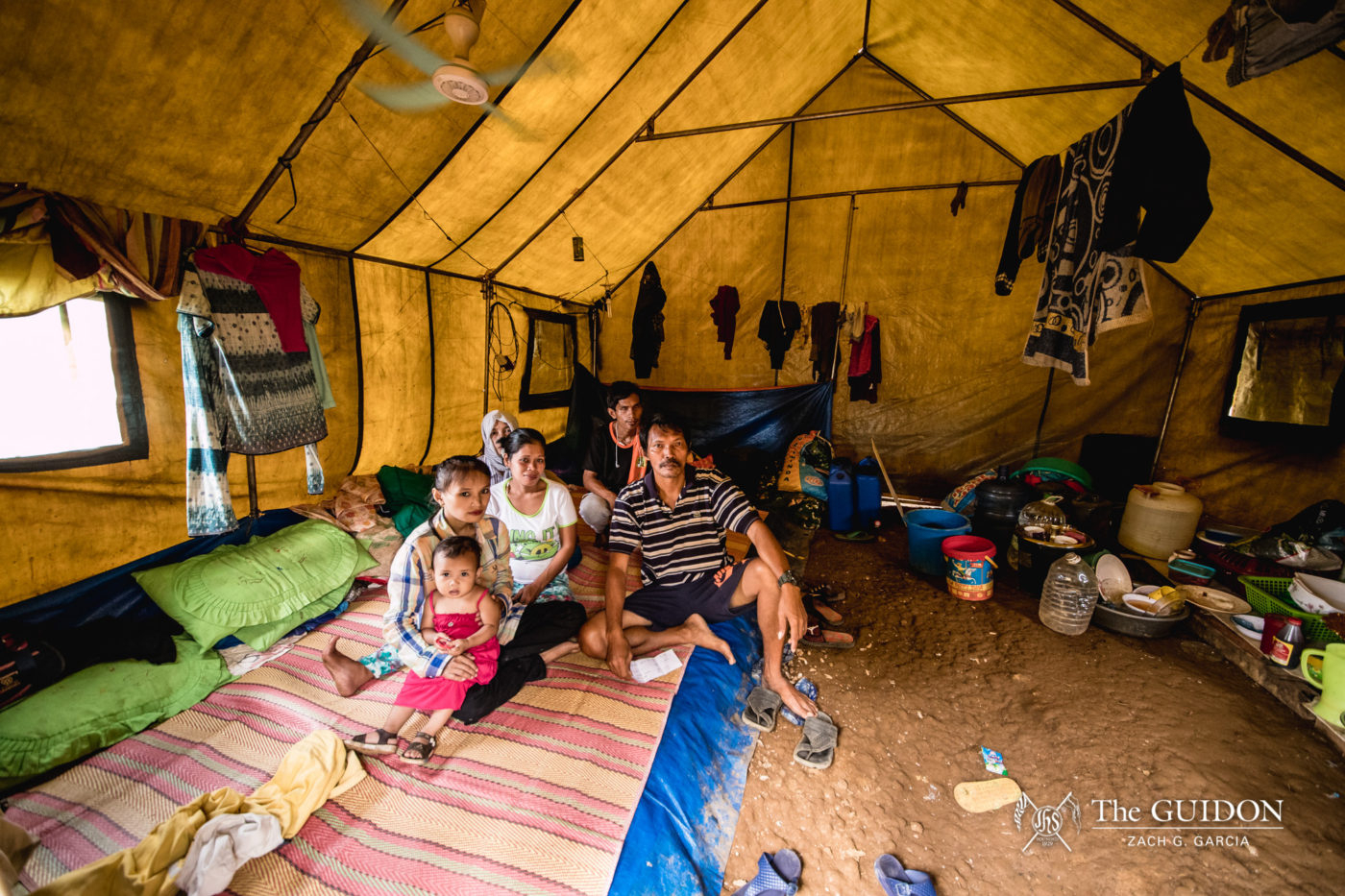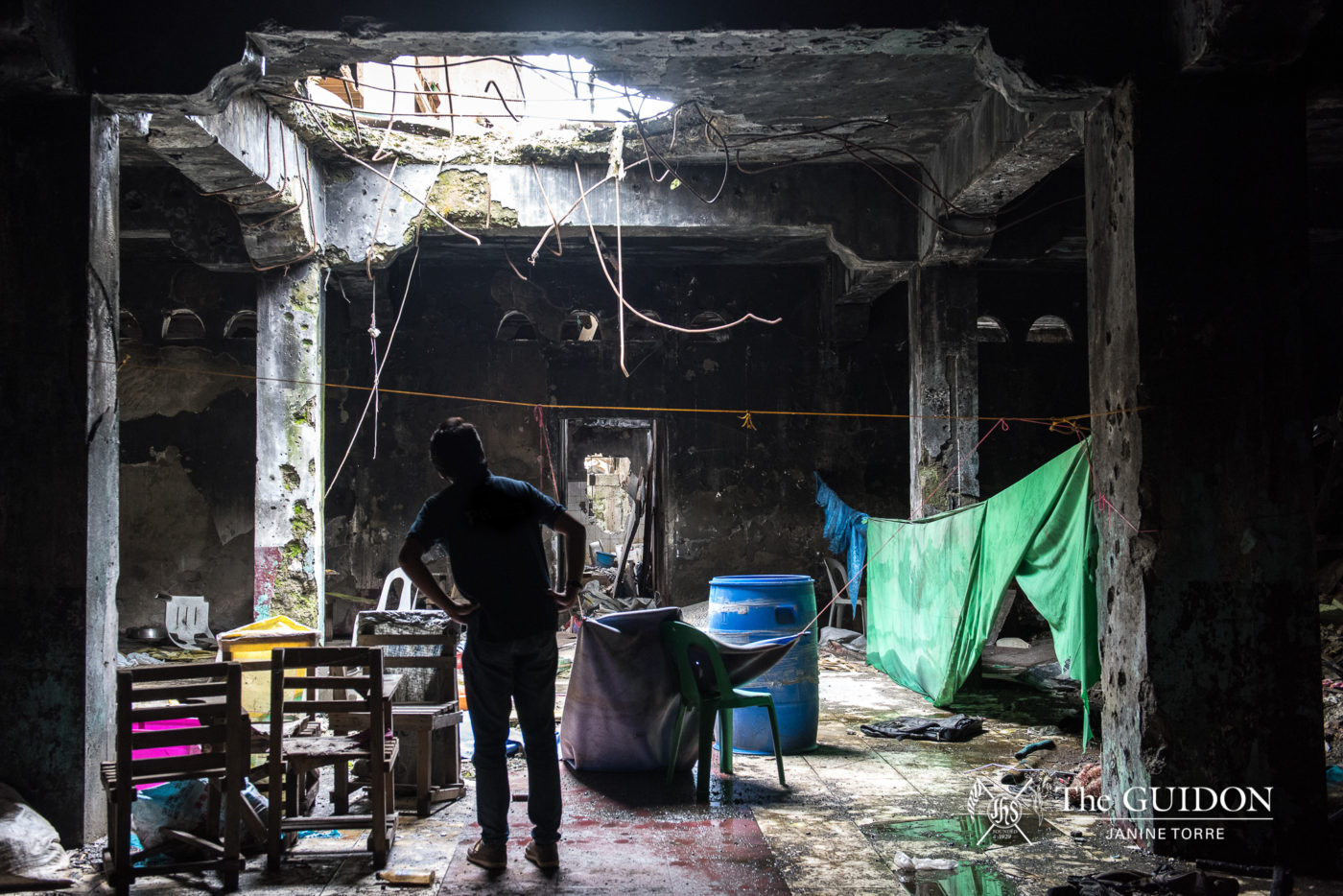NEARLY TWO years following the five month-long siege that decimated the city of Marawi, the aftermath lingers. As government-led rehabilitation efforts attempt to rebuild lives and infrastructure alike, criticisms are abound on the progress of these initiatives. This has led independent constitutional commissions such as the Commission on Audit (COA) to question whether the funds and donations devoted to Marawi’s recovery are being distributed effectively.
The government, through its different agencies such as Task Force Bangon Marawi (TFBM) and the Office of Civil Defence (OCD), is working to get Marawi back on its feet. With billions of pesos worth of cash and donations pouring in locally and internationally, Marawi’s internally displaced residents have high hopes for the war-torn city’s swift recovery.
However, the International Committee of the Red Cross (ICRC) President Peter Maurer and former Senator JV Ejercito echoed the people’s concerns on the alleged slow progress of Marawi’s rehabilitation. Maurer remarked that the “painfully slow” progress of rehabilitation efforts are spurring discontent among Maranaos. Meanwhile, Ejercito warned that the anger of Marawi residents might shift from the terrorists to the government.
Similarly, Philippine Vice President Leni Robredo, Lanao del Norte 1st District Representative Khalid Dimaporo, Mindanao lawmakers, and Marawi’s displaced residents have expressed discontent on the trickling progress. TFBM Spokesperson and OCD Assistant Secretary (ASEC) Kristoffer Purisima took these criticisms in stride when questioned about the critics’ disapproval. In an interview, Purisima responded saying, “[Critics] can criticize, but base it also on facts.”
He asserted that for many people not well-versed with the operation, “[there] are layers of challenges” affecting the speed of Marawi’s rehabilitation. “[There are] complexities that have to be addressed. And we are addressing them,” he assured. “Sure, let us know what you need in terms of information, in terms of data, and we’ll provide it to you so that you would be able to study the situation on the ground.”

COA call-out
This May, COA released a report detailing that donations amounting to only Php 10,000 out of the Php 36.92 million were released for Marawi evacuees in 2018. Shedding light during an interview, OCD Director III of Policy Development and Planning Service Tecson Lim revealed that a policy change on financial assistance affected the process on the releasing of funds. Lim explained that the primary source for assisting the relatives of the dead and missing came from donated funds.
“[S]omewhere to the early part of this administration, ang pinagssource out nila (what they sourced out) for financial assistance for the dead and injured were donated funds. Kaya sa Yolanda makikita mo malaking bulk nandun ang galing (That’s why during Yolanda you’ll see that’s where a large bulk of it came from),” Lim said.
The new policy change revealed by Lim dictated that funds are to be primarily sourced from the Quick Response Fund (QRF), a special fund to “cover for response, relief, and early recovery activities.”
Purisima clarified that the Php 36 million reported by COA was, in fact, donated funds. “I think what was observed by COA initially was that only, […] Php 10,000 out of the Php 36 million because we were using the regular funds [of QRF]. Because the Php 36 million were donated funds,” Purisima said.
Director Lim explained that although only an amount of Php 10,000 of the donated funds was used in 2018, around Php 440,000 was dispensed through the regular budget for the QRF. “Early on, [what] we were using was the Quick Response Fund […] kasi di ganun naman marami yung [families of the] dead and injured talaga na nagclaim (because there weren’t really a lot of dead and injured that claimed) from Marawi. We actually spent almost only Php 440,000,” Lim added.
Another reason for the slow dispersal of funds was the tedious process that Maranaos undergo to attain financial assistance benefits. As mentioned by Purisima, for the families of the dead or injured to claim financial assistance from agencies such as the OCD, they must provide documents as proof of death or injury in order for the agencies to justify released funds to the COA. COA described this process as “very burdensome for some victims” and a possible reason for the incomplete utilization of the funds.
Ongoing rehabilitation
The efficiency of government-led rehabilitation efforts for Marawi was also subject to scrutiny. In COA’s annual audit report on the Housing and Urban Development Coordinating Council (HUDCC), COA highlighted the HUDCC’s several unfinished projects worth a total of Php 11.714 million. COA’s report on the HUDCC detailed that the completion of some land survey projects for potential socialized housing sites were delayed for up to three years. In response, National Housing Agency (NHA) General Manager Marcelino Escalada Jr. cited difficulties in clearing the battleground as one reason for affecting rehabilitation efforts.
Purisima, when questioned regarding the speed and difficulties of the ongoing clearing efforts in Marawi, cited the presence of unaccounted explosives. “Actually, we recognize the sentiments of a lot of our stakeholders regarding the pace of the rehabilitation and recovery,” Purisima said. “The reality is we still need to clear the area of unexploded ordnance and improvised explosive devices or IEDs.”
Since Ground Zero, Marawi’s Most Affected Area, is littered with hidden explosives that pose as risks for future accidents, Purisima reiterated the cost of safety at the expense of speed. Although the government’s main task is the expeditious rehabilitation and recovery of the area, the safety of Marawi’s internally displaced persons (IDPs) as well as government workers and contractors is their utmost priority.
“So I wouldn’t want to compare it with other rehabilitations here or abroad, but we want to do it right. And given the complexity of the situation, given the reality on the ground na marami pa tayong kailangan i-clear (that we still have a lot to clear) in terms of unexploded ordnance and IEDs, we have to tread carefully for the safety of our people as well,” Purisima said.
Sustained criticism
In response to concerns regarding the mishandling of the rehabilitation program for Yolanda victims, Socioeconomic Planning Secretary Ernesto Pernia promised that “[the government is] not going to repeat the problems.”
Lim, who was Tacloban’s city administrator during Yolanda, lamented how the influx of donations made it difficult for the government to control where everything was going. “Isang problema namin sa Yolanda (One problem we had during Yolanda) […] everybody was getting some kind of help to the point that us in the local government and even the national government could not really control where it was going,” he said.
When a disaster necessitates large-scale rehabilitation, a Comprehensive Rehabilitation and Recovery Plan (CRRP) is drafted by the government and then followed by pertinent agencies in order to properly utilize and distribute funds and donations. “So nakalagay na dun lahat ng programs ng [Projects, Activities, and Programs] PAP (Everything is under those programs),” Purisima said. “And all implementing agencies should be able to follow those PAPs so that we would have a comprehensive recovery and rehabilitation.”
According to Lim, recent policy changes, like the mandatory use of the QRF as the primary fund for relief assistance mentioned in the interview, are in place to prevent another difficult logistics scenario similar to what the victims of Yolanda faced. Coordinating all funds and donations with TFBM in accordance with the Bangon Marawi CRRP, the “mother program” for Marawi, serves to curb issues of transparency and order.
Lim further disclosed that a policy to have all donated funds coursed through the Bureau of Treasury is currently in the works. “[A]ctually, the government is trying to come up with a policy now where all of the funds received will go into the Bureau of Treasury,” Lim said. “[This will now ultimately serve as the fund [for] the government’s projects, programs, projects and activities.”
With major policies underway to properly regulate the Php 8 billion set aside for future rehabilitation projects and amidst mounting criticism for its proponents, Marawi’s problems are arguably still far from over.




